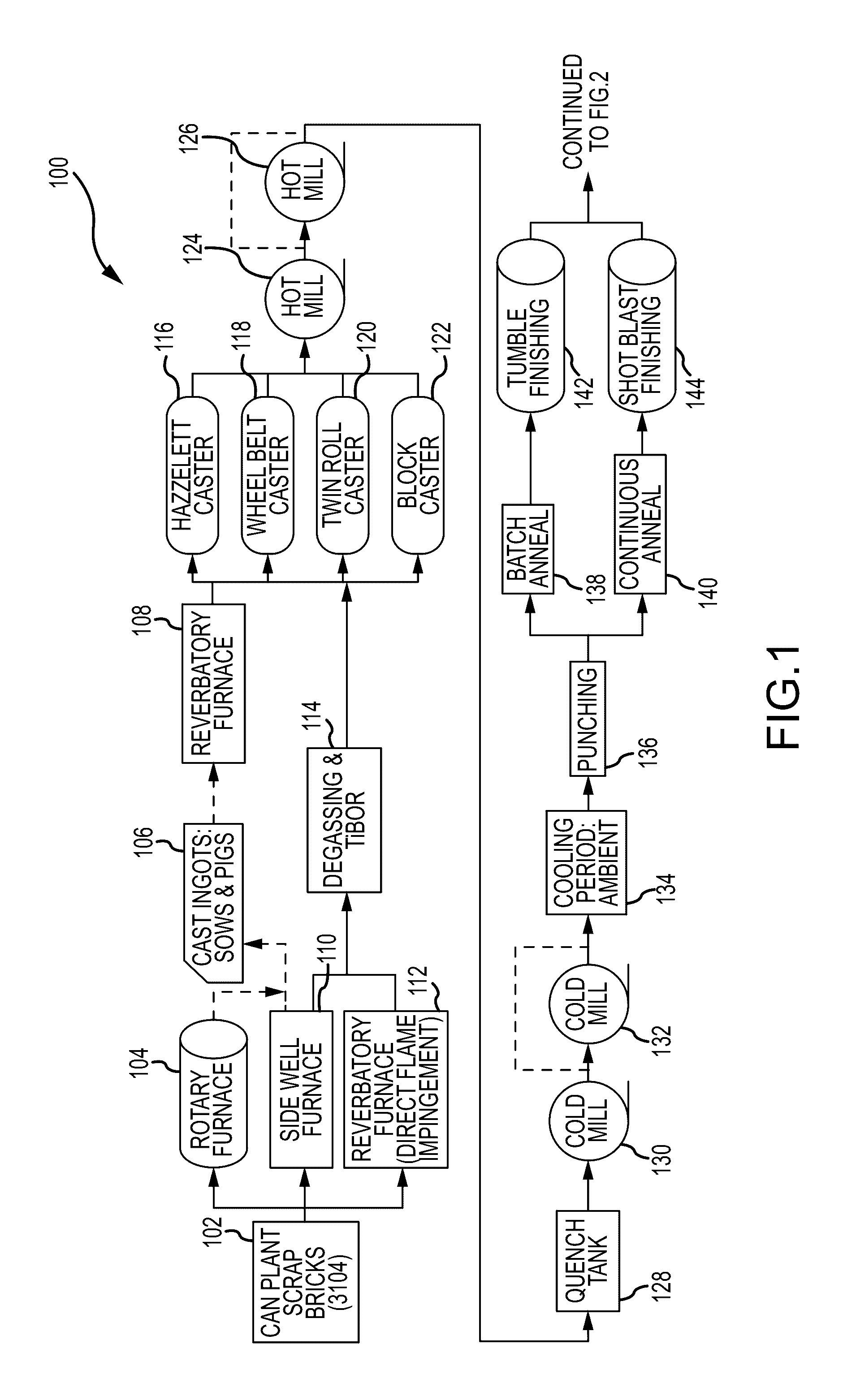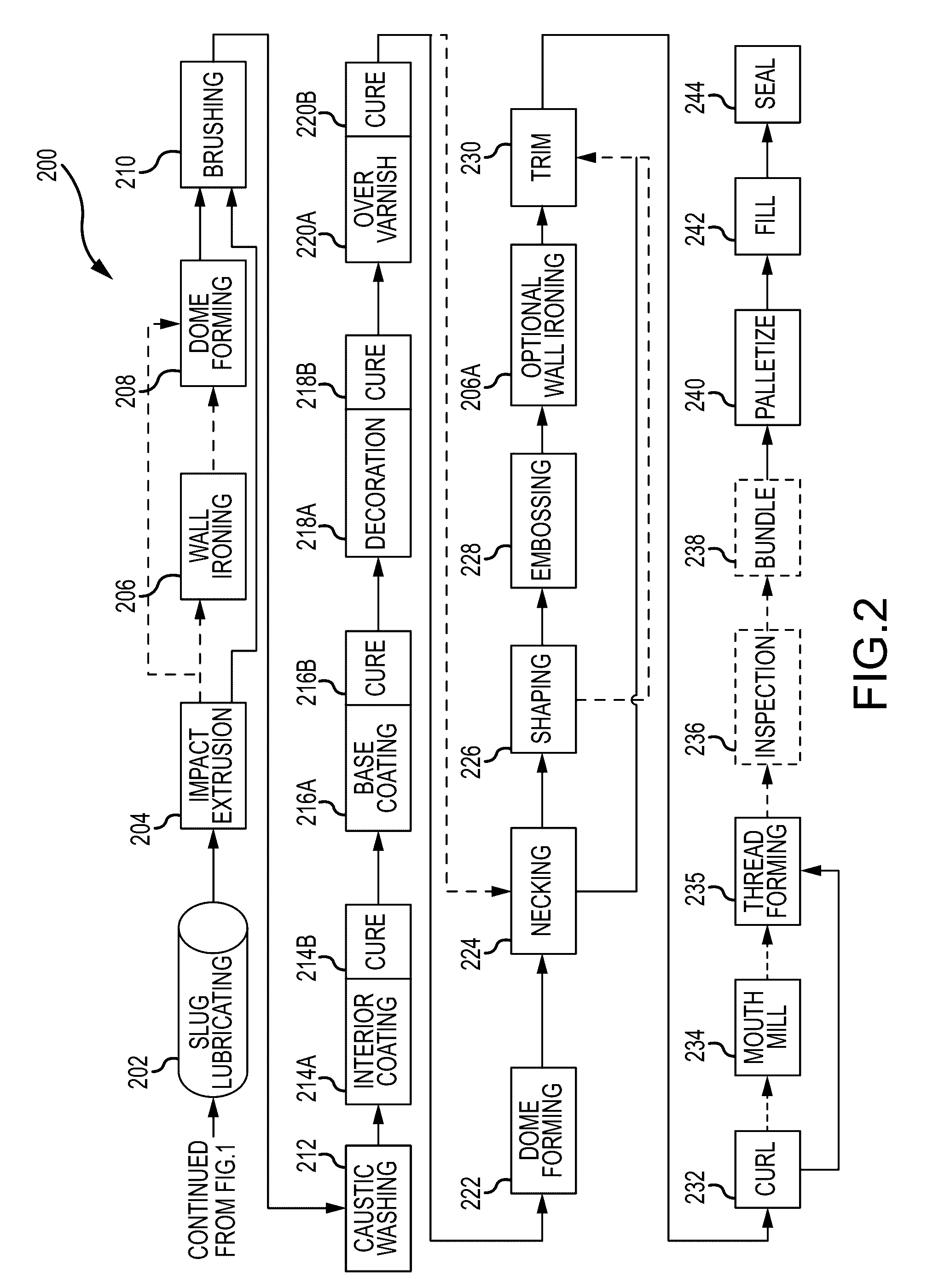Aluminum impact extruded bottle with threaded neck made from recycled aluminum and enhanced alloys
a technology of aluminum and aluminum alloy, which is applied in the direction of caps, liquid handling, other domestic objects, etc., can solve the problems of low mechanical properties, glass bottles do not offer the same convenience, and drink cooler beverages faster, so as to achieve sufficient mechanical strength and reduce cost. , the effect of increasing the strength
- Summary
- Abstract
- Description
- Claims
- Application Information
AI Technical Summary
Benefits of technology
Problems solved by technology
Method used
Image
Examples
example 1
[0148]Example 1 utilized Material 1 and Material 2 with slugs that had a diameter of about 1.7579 in and a height of about 0.2165 in. The mass of the slug material was about 0.820 oz. The final dimension of the container following processing, but prior to trimming, was about 5.9055 in.+ / −about 0.3937 in. in height by about 1.7772 in. in diameter. The thickness of the final container was about 0.0110 in.+ / −0.0012 in. The final mass of the container was about 0.819 oz. A standard necking tooling was used.
[0149]After using Material 2 slugs, the punch head needed to be changed because it was worn. A larger punch may be required to meet the container parameters.
example 2
[0150]Example 2 utilized Material 1 and Material 2 with slugs that had a diameter of about 1.7579 in. and a height of about 0.1969 in. The mass of the slug material was about 0.745 oz. The final dimensions of the container following processing, but prior to trimming was about was about 5.9055 in+ / −about 0.3937 in. in height by about 1.7772 in. in diameter. The thickness of the final container was about 0.0094 in.+ / −0.0012 in. The final mass of the container was about 0.728 oz. A larger diameter pilot was used. The diameter of the pilot was about 0.0039 in. larger.
[0151]Almost no eccentricity in wall thicknesses (< about 0.00079) occurred due to the use of a brand new press die and a punch head. Once again, the slugs from Material 1 appear to perform better than Material 2 slugs. Indeed, similar than the results from Experiment 1, almost no scratches were visible neither inside nor outside the containers with Material 1. When Material 2 slugs were used, scratches appeared after 6,000...
PUM
| Property | Measurement | Unit |
|---|---|---|
| diameter | aaaaa | aaaaa |
| diameter | aaaaa | aaaaa |
| diameter | aaaaa | aaaaa |
Abstract
Description
Claims
Application Information
 Login to View More
Login to View More - R&D
- Intellectual Property
- Life Sciences
- Materials
- Tech Scout
- Unparalleled Data Quality
- Higher Quality Content
- 60% Fewer Hallucinations
Browse by: Latest US Patents, China's latest patents, Technical Efficacy Thesaurus, Application Domain, Technology Topic, Popular Technical Reports.
© 2025 PatSnap. All rights reserved.Legal|Privacy policy|Modern Slavery Act Transparency Statement|Sitemap|About US| Contact US: help@patsnap.com



